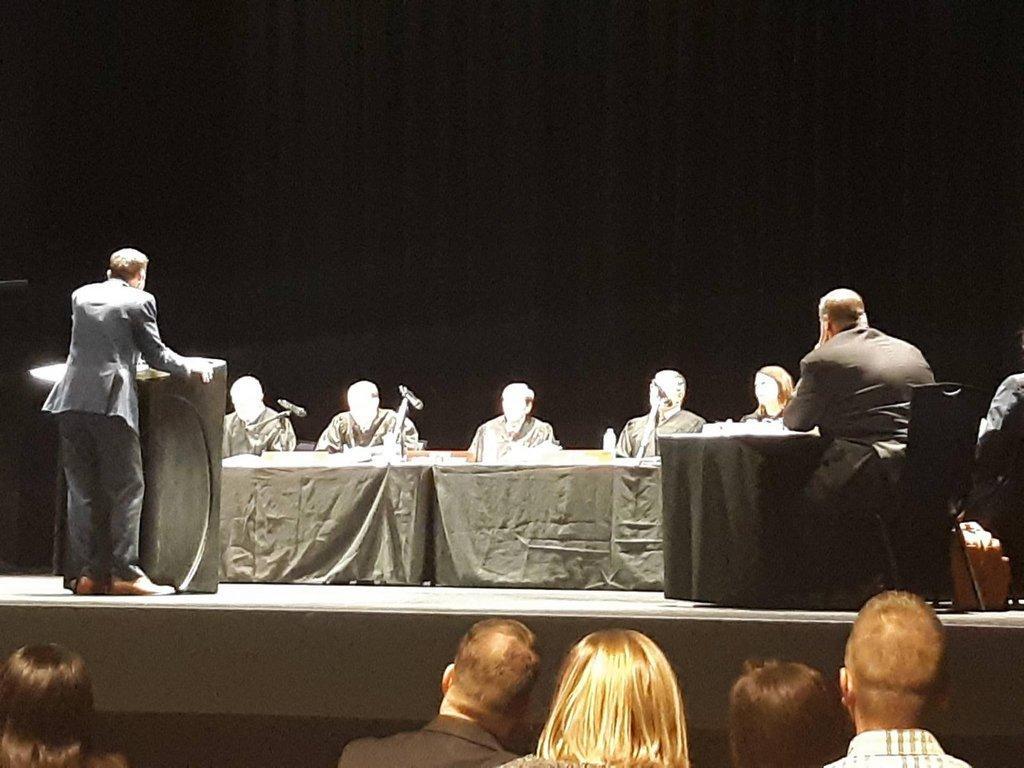USU Eastern welcomed five members of the Utah Supreme Court on Wednesday morning to the Geary Events Center for a special oral argument session. Members in attendance were Chief Justice Matthew B. Durrant, Associate Chief Justice Thomas R. Lee, Justice Deno G. Himonas, Justice John A. Pearce and Justice Paige Petersen.
These five tackled two separate cases, with the first beginning around 10:10 a.m. This case, Kay versus Barnes Bullets, came about after Layne Kay filed a lawsuit against Barnes Bullets after experiencing various health problems. Kay alleged that he was intentionally injured by being assigned to melt lead. This case was requested to be dismissed by Barnes Bullets due to a lack of evidence that the injury was the result of intentional conduct.
This was denied by the district court and Barnes appealed the interlocutory order. From there, the Supreme Court reviewed the decision of the district court with representation on both sides present to argue their sides.
Kay insists that what can come from melting lead is not an inherent risk of the job as bullets may be made without that process. It was stated that melting the lead was not a part of the plaintiff’s job and was a task he was assigned when he was not able to conduct his usual work. However, in opposition, it was stated that that is a backward view as melting lead is assigned to whoever is available to do so from any department.
This had been conducted by Barnes Bullets since 1974 and was believed to be an inherent risk of the plaintiff’s job as all that were there were in a position to be assigned to melt the lead.
Justice Himonas stated that he was deeply troubled by the position that they were in. Ultimately, the Supreme Court thanked those that attended and stated that all information given would be taken into consideration.
Following, at around 11:15 a.m., the court reviewed the case of the State versus Argueta. In this case, a defendant was charged with burglary and forcible sexual abuse after he entered a couple’s apartment. He was detained by the man that lived there and arrested by police. While still at the scene, the woman who lived in the apartment accused the man of touching her while she was asleep.
The defendant volunteered a statement that contested the accusation and also implied reason for his presence there. During his trial, he attempted to provide an explanation for entering the apartment.
Prior decisions on a similar case were referred to by the Court of Appeals and concluded that the inquiry about the post-arrest statements did not violate the defendant’s right to remain silent. From there, the Supreme Court listened and took advisement on this case similarly to the one before.
Following the presentation of these cases, a short question and answer forum was hosted as many members of the community and USU Eastern students had a chance to ask questions.


